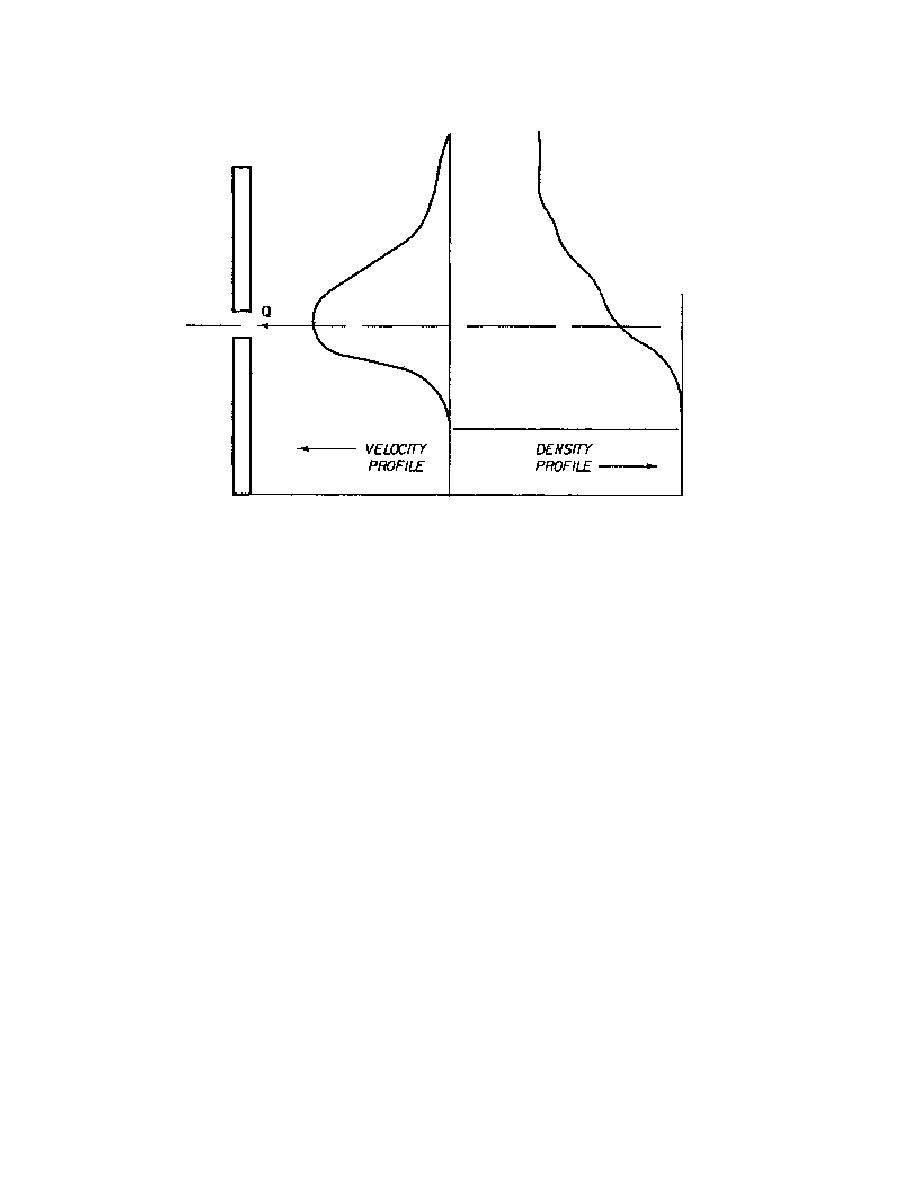
|
|

|
||
 Figure 4.3.1 Schematic of withdrawal zone
The design methodology for a selective withdrawal system, given in the following paragraphs, is
based on physical and numerical model investigations.
Since the density gradient in the water column has a direct influence on the potential energy of
the water at various levels, it strongly affects the development of the withdrawal limits. For example, if
the stratification is weak or nonexistent, the withdrawal limits may extend from the bottom to the water
surface. If the water column is strongly stratified, this will cause the withdrawal limits to shrink so that
the port is withdrawing from a smaller cross-sectional area. Therefore, the density stratification (usually
temperature) for design conditions must first be determined.
If the selective withdrawal investigation involves an existing reservoir, existing profiles may be
used. If the selective withdrawal investigation is for a reservoir not yet constructed, a one-dimensional
numerical model can be used to predict typical temperature profiles. Additional information relative to
the selective withdrawal investigation, such as local topography and operating criteria (hydraulic and
water quality), should also be compiled.
The development of the withdrawal zone often is modified by a physical boundary. The port
may be too close to the top or bottom of the reservoir to permit full development of the withdrawal
limits. The result is that the unobstructed limit is moved vertically to draw in the required flow. Also,
the approach geometry to the outlet structure may affect the withdrawal zone through reduction of the
lateral extent of withdrawal or the withdrawal angle.
4.3-2
|
||
 |
||